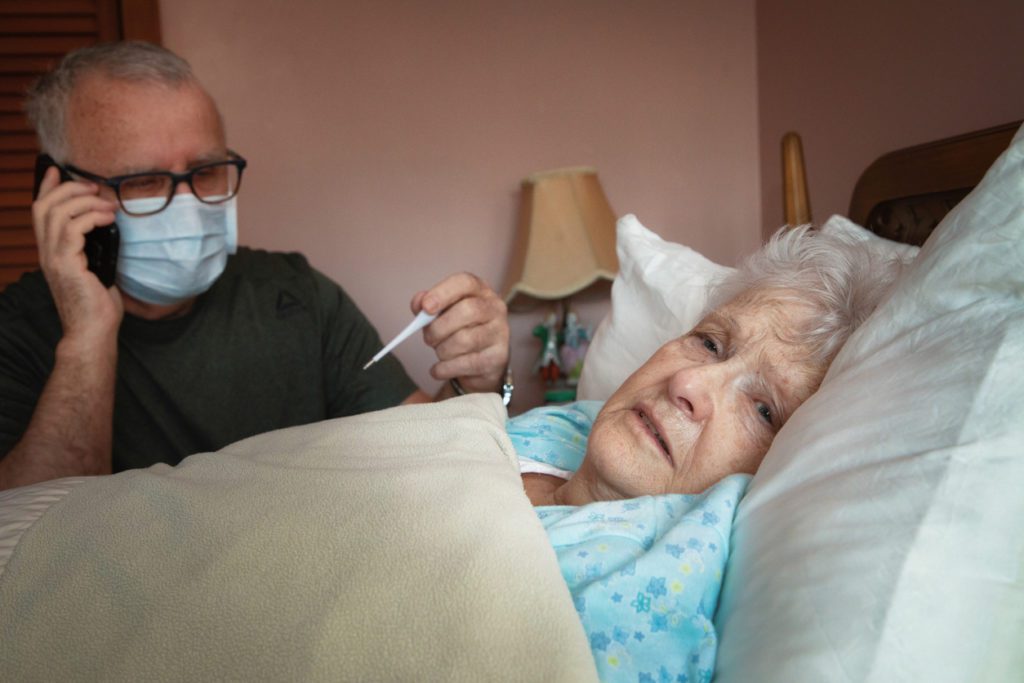How Coronavirus Affects the Elderly
 The COVID-19 dominating all news headlines has quickly turned into a global pandemic. The strict social distancing and quarantine measures being put in place right now are an effort to “flatten the curve,” primarily to protect the most vulnerable in our society (particularly the elderly and those with comorbid health conditions).
The COVID-19 dominating all news headlines has quickly turned into a global pandemic. The strict social distancing and quarantine measures being put in place right now are an effort to “flatten the curve,” primarily to protect the most vulnerable in our society (particularly the elderly and those with comorbid health conditions).
Coronaviruses (CoV) are actually a large family of viruses that cause illness ranging from the common cold to more severe diseases such as Middle East Respiratory Syndrome (MERS-CoV) and Severe Acute Respiratory Syndrome (SARS-CoV). COVID-19 is a new strain first discovered in humans in 2019.
According to the World Health Organization (WHO), common signs of COVID-19 include respiratory symptoms, fever, cough, shortness of breath, and breathing difficulties. In more severe cases, infection can cause pneumonia, severe acute respiratory syndrome, kidney failure, and even death. Current estimates show that without strong containment measures, the average person who catches COVID-19 will pass it on to two others. Even though this has been a bad flu year (affecting 36 million people in the U.S., with 370,000 hospitalizations and 22,000 deaths), this virus appears to have a higher mortality rate than the seasonal flu.
Since COVID-19 hit the northern hemisphere during flu season, many doctors were slow to initially detect new cases of the virus due to overlapping symptoms with the flu, which helped lead to its rapid spread. The incubation period for COVID-19 can be quite long; after exposure to the virus, people may not experience symptoms from two to 14 days (though symptoms often emerge between five and six days). During this time, these individuals can still pass the virus along to others, even if they are not showing any signs of fever, cough, or respiratory problems. The flu typically hits hard and fast, with a full onslaught of symptoms like fever, sore throat, aches, shivers, fatigue, and headaches. The coronavirus, on the other hand, can start out mild and then worsen over time.
One of the biggest concerns about the coronavirus outbreak right now, confirmed by what is currently happening in Italy, is that not enough resources exist to take care of the anticipated medical need. Because the virus is brand new, it is spreading rapidly since nobody has immunity to it yet. Once coronavirus symptoms begin, people typically worsen for five to eight days. At that point, six out of seven people tend to start improving, while one in seven gets even worse and needs to be hospitalized for oxygenation and specialized care. Approximately two out of 100 get so bad that they need to be intubated and moved into the ICU for two to four weeks. The U.S. population is 331 million, and without “social distancing,” it is anticipated that 40% to 70% of the population will catch the virus over the next few months. On the low end (at 40%), that would be 132 million sick people, of which 15 percent (20 million people) would need hospitalization. Of those, 2% (or 2.6 million) would need ventilators. The United States has 925,000 hospital beds, 98,000 ICU beds, and 160,000 ventilators. Doing the math, it becomes apparent how quickly our resources could be overwhelmed – not even factoring in those already hospitalized or on a ventilator for other reasons.
While everyone is susceptible to the coronavirus right now, the elderly are most at risk for two main reasons: their immune systems typically decline as they age, and they are more likely to suffer from underlying conditions (such as chronic obstructive pulmonary disease) that hinder the body’s ability to cope with and recover from illness. The coronavirus affects the part of the lungs where gas exchange (the delivery of oxygen to the bloodstream and the removal of carbon dioxide) takes place. The lungs of those over age 65 are typically not as elastic or resilient anymore, which leads to a greater loss of airway and respiratory function.
The Center for Disease Control and Prevention (CDC) has issued specific guidelines about COVID-19 for those at highest risk (older adults and those with serious chronic medical issues such as heart disease, diabetes, and lung disease). They encourage seniors to stock up on supplies while avoiding crowds as much as possible. This may mean utilizing grocery delivery, online shopping, or going to the stores during low-traffic hours. (Many stores have begun offering special hours for senior citizens or the disabled.) The CDC suggests contacting your healthcare provider to ask about obtaining extra essential medications in case you need to remain at home for an extended period of time. Limit in-person visits from others; instead, try to stay in touch with friends and family through email, phone calls, or FaceTime. If you have an upcoming annual check-up or regular appointment in a hospital or healthcare facility, consider whether you should reschedule or postpone the appointment to a later date to avoid increasing your exposure to the virus. Try to remain as active as possible while at home, exercising by doing mild housework or even walking in the hallways. Click here to read additional recommendations from the CDC for those most at risk.
Family members of senior citizens should make sure a caregiver plan is in place if they don’t live nearby. They should check in regularly to be sure their elderly family member has enough medication, food, and supplies. If your loved one lives in a care facility, be sure to closely monitor the situation, ask frequently about the health of other residents, and know what the protocol will be if an outbreak occurs.
While efforts to develop a vaccine for COVID-19 are underway, it is not likely that an effective vaccine will be available for the public in time to address the current outbreak. The best way to prevent getting the disease is to wash your hands with soap and hot water for at least 20 seconds, and to repeat this often, especially if you leave home and then return. If soap and water are not available, use an alcohol-based hand sanitizer. Avoid touching your face if you have not washed your hands recently. Cough or sneeze into a tissue or your elbow, not your hand. Try to remain at least six feet away from people in public, and definitely avoid close contact with people showing possible symptoms. Avoid all non-essential travel, and self-isolate whenever possible. Most infections are spread in close quarters, such as families and nursing homes. Viral-loaded water droplets from coughs can be spread from a distance of three to six feet. The virus can linger for 48 to 72 hours on a hard surface (less time on a soft surface). Disinfect your home to remove germs, especially areas like doorknobs, light switches, telephones, handles, faucets, and toilets.
If an elderly person begins showing symptoms, s/he doesn’t have to go to the hospital right away (except in the case of emergency symptoms like shortness of breath). Instead, call a healthcare provider to get advice.
Be sure to continue educating yourself about the coronavirus and ongoing guidelines from the CDC and various levels of government. This link from the CDC contains important myth-busting information about the virus.
